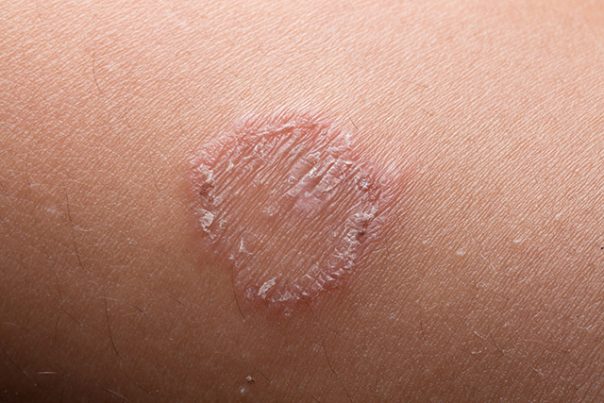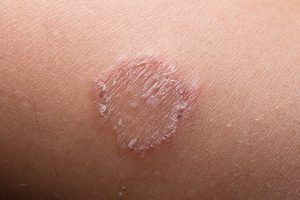
Ringworm – causes, side effects and treatments at NaturalPedia.com
Friday, June 22, 2018 by Michelle Simmons
http://www.naturalpedia.com/ringworm-causes-side-effects-and-treatments-at-naturalpedia-com.html

Ringworm, despite the name, is a common fungal infection that affects the skin and nails. This infection can be caused by three different types of fungi, namely trichophyton, Microsporum, and epidermophyton. These fungi may live for an extended period as spores in the soil, where it can be transmitted to humans and animals through direct contact. The infection can also spread through contact with infected animals or humans. Ringworm is commonly spread among children and by sharing items that may not be clean. The infection is named “ringworm” because it can cause an itchy, red, circular rash. Tinea and dermatophytosis are the other names for ringworm.
Ringworm has different types which are classified according to the affected part of the body. If the feet are affected, it is commonly known as athlete’s foot; if the groin, inner thighs, or buttocks is affected, it is commonly called jock itch; if it occurs in the scalp, it is called tinea capitis; if it is in the beard, it is called tinea barbae; if the hands are affected, it is called tinea manuum; if it occurs in the toenails or finger nails, the condition is called onychomycosis or tinea unguium; and if it occurs in other parts of the body like the arms or legs, it is called tinea corporis.

Known side effects of ringworm
The side effects of ringworm vary depending on the location of the infection. With a skin infection, ringworm may red, itchy, scaly, or raised patches, patches that develop blisters or begin to ooze, patches that may be redder on the outside edges or resemble a ring, and patches with edges that are defined and raised. With scalp ringworm, it may cause small patches of scaly skin on the scalp; patches may feel tender or painful and be inflamed, hair breakage on or near the patches, and kerion.
Groin infection may cause itchiness, redness and a burning sensation in the affected area, flaky and scaly skin on the inner thighs. Its symptoms worsen when walking, running, exercising, or wearing tight clothing. Ringworm of the beard can cause redness, swelling, and pus-filled bumps, hair loss, swollen glands, tiredness, and raw, open skin and raised, soft, spongy patches that weep.
Although very rare, ringworm can cause complications, such as the spreading of the lesions to other parts of the body, secondary infection resulting in painful cysts or abscesses, and kerion, an abscess caused by ringworm of the scalp.
Body systems harmed by ringworm
The body systems damaged by ringworm include the integumentary and the immune systems.
List of foods or nutrients that prevent ringworm
Foods that fight ringworm include onions, garlic, coconut oil, nuts like almonds, and seeds of safflower. Other foods that help fight ringworm include vitamin A-rich foods, such as carrots, kale, apricots, mustard greens, parsley, spinach and hot peppers; vitamin E-rich foods, such as olive and sunflower oils, eggs, hazelnuts, lentils, spinach, almonds, sesame seeds and whole-grain bread; and clove.
Treatments, management plans for ringworm
Treatment options for ringworm include medications, proper hygiene, apple cider vinegar, tea tree oil, coconut oil, garlic, Indian lilac, turmeric, licorice, colloidal silver, and iodine.
Where to learn more
- 15 Natural Home Remedies for Ringworm
- Top Five Home Remedies for Ringworm
- 3 common parasites that are literally eating you alive
- DIY antibacterial spray for your workout equipment
- Home Remedies for Peeling Skin
Summary
Ringworm is a common infection of the skin and nails caused by fungus.
Ringworm generally causes an itchy, red, circular rash.
Ringworm can cause complications, such as the spreading of the lesions to other parts of the body, secondary infection resulting in painful cysts or abscesses, and kerion, an abscess caused by ringworm of the scalp.
Foods that fight against ringworm include onions, garlic, coconut oil, nuts like almonds, seeds of safflower, foods rich in vitamin A, and foods rich in vitamin E.
Treatment options for ringworm include medications, proper hygiene, apple cider vinegar, tea tree oil, coconut oil, garlic, Indian lilac, turmeric, licorice, colloidal silver, and iodine.
Sources include:
Tagged Under: Tags: Ringworm





